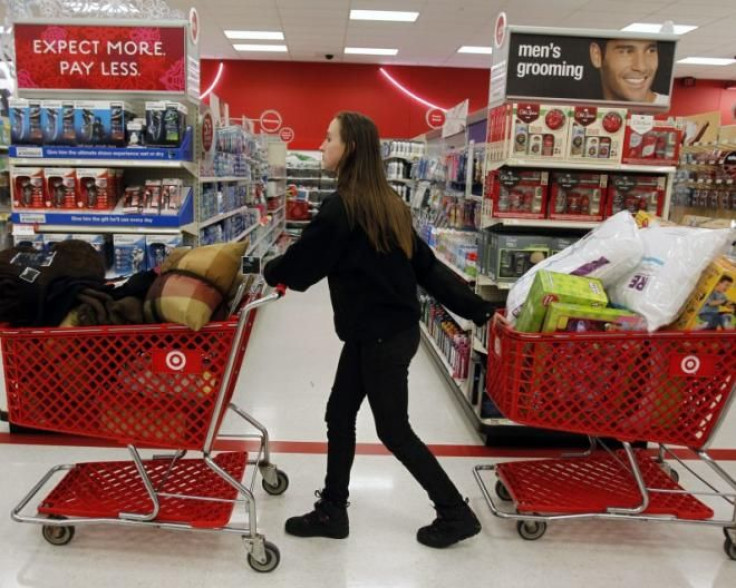US Holiday Retail Sales Growth - Hurt By Superstorm Sandy, ‘Fiscal Cliff’ - Weakest Since 2008, May Signal Weak 2013

U.S. holiday retail sales this year were the gloomiest they've been since the 2008 recession, as Superstorm Sandy and worries over the fiscal cliff soured the holiday mood in what could be a harbinger of the U.S. economy next year. One day after Christmas, retailers are expected to offer deeper discounts to lure customers and put a dent in a sluggish shopping season.
Sales of electronics, clothing, jewelry and home goods in the two months before Christmas rose just 0.7 percent from the year before, according to the MasterCard Advisors SpendingPulse report. That was below the healthy 3 percent to 4 percent growth that analysts had expected.
After falling 5.5 percent in 2008, holiday sales rebounded strongly in 2009 and 2010, and they rose about 2 percent last year, according to sales activity in the MasterCard payments network and estimates for all other forms of payment, including cash and checks. Restaurants and sales of automobiles, groceries and gasoline are not included.
From Superstorm Sandy to the fiscal cliff, and many other painful events, consumer sentiment dwindled in December to its lowest point since July. The Thomson Reuters/University of Michigan consumer sentiment index slid to 72.9, from 82.7 in November.
Superstorm Sandy battered the Northeast and mid-Atlantic states in late October, interrupting shopping in stores and online. According to Michael McNamara, Spending Pulse's vice president of research and analysis, the Northeast and mid-Atlantic account for 24 percent of U.S. retail sales. Retailers from Macy's, Inc. (NYSE: M) to Target Corporation (NYSE: TGT) posted same-store sales that trailed analysts’ estimates.
As the weather calmed, consumers grew increasingly nervous about a potential recession next year if Washington approached the end of the year without an agreement to forestall higher taxes and automatic spending cuts set to take effect in early 2013.
Sales declined by 3.9 percent in the mid-Atlantic and 1.4 percent in the Northeast compared with last year. They rose 0.9 percent in the north-central part of the country. The West and South posted gains of between 2 percent and 3 percent.
Online sales, which make up about 10 percent of total holiday business, grew only 8.4 percent from Oct. 28 through Dec. 22, according to SpendingPulse. That's a sharp slowdown from the online sales growth of 15 percent to 17 percent seen in the prior 18-month period.
Holiday sales are a crucial indicator of the economy's strength. November and December account for up to 40 percent of annual sales for many retailers. If those sales don't materialize, stores will be forced to offer steeper discounts, which will cut into their profits and have repercussions in the coming year for manufacturers, wholesalers and companies at every other point along the supply chain. After all, spending by consumers accounts for 70 percent of overall economic activity.
Separately, the International Council of Shopping Centers said Wednesday that retail sales for the week ended Dec. 22 were up just 0.7 percent. The New York-based trade group tracks more than 25 chains and expects December industry sales to increase 4 percent to 4.5 percent, excluding drug stores.
ShopperTrak, which tracks retail foot traffic at 40,000 U.S. retailers, on Dec. 19 trimmed its forecast for November-December holiday sales to $257.7 billion, or a 2.5 percent gain, from a previous estimate of 3.3 percent growth.
The National Retail Federation kept its holiday-sales estimate at $586 billion, an increase of 4.1 percent from last year, compared with the previous year's 5.6 percent gain.
Despite the gloomy figures, analysts say that the final week of December usually accounts for approximately 15 percent of the month’s sales. So retailers still have time to make up lost ground.
© Copyright IBTimes 2024. All rights reserved.












